-
 Bitcoin
Bitcoin $105,278.9859
4.61% -
 Ethereum
Ethereum $2,414.7741
8.20% -
 Tether USDt
Tether USDt $1.0007
0.05% -
 XRP
XRP $2.1600
7.53% -
 BNB
BNB $639.5433
3.75% -
 Solana
Solana $144.3830
9.37% -
 USDC
USDC $1.0001
0.02% -
 TRON
TRON $0.2742
3.84% -
 Dogecoin
Dogecoin $0.1640
8.57% -
 Cardano
Cardano $0.5811
7.49% -
 Hyperliquid
Hyperliquid $37.2466
5.28% -
 Sui
Sui $2.8243
14.84% -
 Bitcoin Cash
Bitcoin Cash $460.8816
2.22% -
 Chainlink
Chainlink $12.9580
11.75% -
 UNUS SED LEO
UNUS SED LEO $9.1359
1.23% -
 Avalanche
Avalanche $18.2302
10.30% -
 Stellar
Stellar $0.2463
7.80% -
 Toncoin
Toncoin $2.9151
7.18% -
 Shiba Inu
Shiba Inu $0.0...01163
9.79% -
 Hedera
Hedera $0.1532
14.01% -
 Litecoin
Litecoin $85.3310
6.29% -
 Monero
Monero $308.8215
2.90% -
 Ethena USDe
Ethena USDe $1.0007
0.03% -
 Polkadot
Polkadot $3.4259
9.42% -
 Dai
Dai $1.0002
0.01% -
 Bitget Token
Bitget Token $4.1742
3.19% -
 Uniswap
Uniswap $6.8272
8.53% -
 Pepe
Pepe $0.0...09939
12.29% -
 Pi
Pi $0.5358
6.03% -
 Aave
Aave $257.3092
12.83%
What is the most appropriate setting for SAR parameters?
SAR indicator's effectiveness in crypto trading depends on adjusting initial AF and MAF to suit market conditions, like setting AF to 0.04 and MAF to 0.25 for strong trends.
May 24, 2025 at 10:28 pm
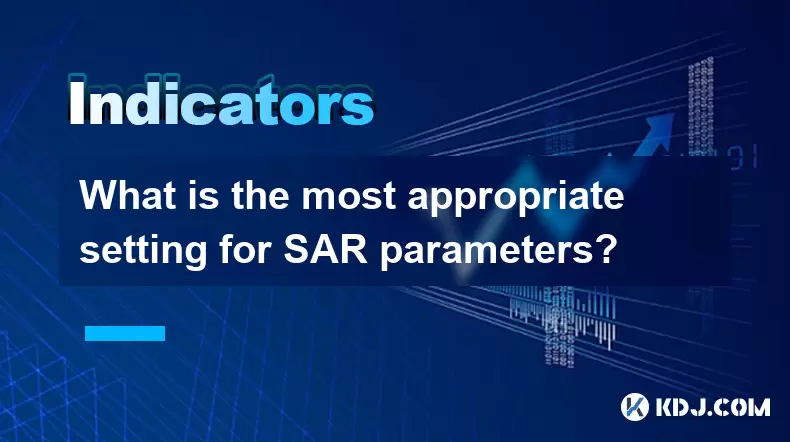
Understanding SAR Parameters
The Stop and Reverse (SAR) indicator, often referred to simply as SAR, is a popular tool among traders in the cryptocurrency market for determining potential entry and exit points in trades. The SAR indicator works by placing a trailing stop on a chart, which helps traders to identify when a trend might be reversing. The effectiveness of the SAR largely depends on the settings used, which include the initial acceleration factor (AF) and the maximum acceleration factor (MAF). These parameters are crucial for tailoring the indicator to different market conditions and trading strategies.
Initial Acceleration Factor (AF)
The initial acceleration factor (AF) is the starting value used to calculate the SAR. The default setting for the initial AF is usually set at 0.02. This value determines how quickly the SAR moves towards the price action. A lower initial AF means the SAR will trail the price more slowly, which can be beneficial in markets with less volatility. Conversely, a higher initial AF can be more suitable for markets with higher volatility, as it allows the SAR to adjust more quickly to rapid price changes.
Maximum Acceleration Factor (MAF)
The maximum acceleration factor (MAF) caps the rate at which the SAR can accelerate. The default setting for the MAF is typically 0.20. This parameter prevents the SAR from becoming too sensitive to price movements, which could lead to premature exits from trades. Adjusting the MAF can help traders balance between capturing larger trends and avoiding false signals. A higher MAF might be preferred in strongly trending markets, while a lower MAF can be more appropriate in choppy or sideways markets.
Adjusting SAR Parameters for Different Market Conditions
Different market conditions require different settings for the SAR parameters. In a strongly trending market, traders might opt for a higher initial AF and a higher MAF to ensure the SAR can keep up with the rapid price movements. For instance, setting the initial AF to 0.04 and the MAF to 0.25 could be more effective in capturing larger trends. On the other hand, in a sideways or choppy market, a lower initial AF, such as 0.01, and a lower MAF, such as 0.15, might be more suitable to avoid false signals and whipsaws.
Practical Application of SAR Parameters in Cryptocurrency Trading
To apply SAR parameters effectively in cryptocurrency trading, traders need to consider the specific characteristics of the cryptocurrency they are trading. For example, Bitcoin (BTC) might exhibit different volatility and trend patterns compared to Ethereum (ETH) or smaller altcoins. Here's a step-by-step guide on how to adjust SAR parameters in a trading platform:
- Open your trading platform and navigate to the chart of the cryptocurrency you wish to trade.
- Select the SAR indicator from the list of available indicators.
- Adjust the initial AF to a value that suits the current market conditions. For instance, if the market is trending strongly, you might set it to 0.04.
- Adjust the MAF to a value that balances sensitivity and stability. For a trending market, you might set it to 0.25.
- Apply the changes and observe how the SAR interacts with the price action on the chart.
- Monitor the performance of the SAR with the new settings and make further adjustments as needed based on market conditions.
Backtesting SAR Parameters
Backtesting is a critical step in optimizing SAR parameters for cryptocurrency trading. By analyzing historical data, traders can determine which settings have historically performed the best in different market scenarios. To backtest SAR parameters:
- Select a historical period that reflects the market conditions you are interested in analyzing.
- Apply different combinations of initial AF and MAF to the SAR indicator.
- Run the backtest and evaluate the performance of each combination in terms of profitability, drawdown, and other relevant metrics.
- Compare the results to identify the most effective settings for your trading strategy.
- Refine the parameters based on the backtesting results and apply them to live trading.
Real-World Examples of SAR Parameter Settings
To illustrate the impact of different SAR parameter settings, let's consider a few real-world examples from the cryptocurrency market:
Example 1: Bitcoin (BTC) in a Strong Uptrend
- Initial AF: 0.04
- MAF: 0.25
- In this scenario, the higher initial AF and MAF allow the SAR to quickly adjust to the rapid upward movements of Bitcoin, helping traders to stay in the trend longer and capture larger gains.
Example 2: Ethereum (ETH) in a Sideways Market
- Initial AF: 0.01
- MAF: 0.15
- Here, the lower initial AF and MAF help the SAR to remain stable in the choppy price action of Ethereum, reducing the likelihood of false signals and premature exits.
Example 3: Altcoin in a High Volatility Environment
- Initial AF: 0.03
- MAF: 0.20
- In this case, the moderate settings of the initial AF and MAF balance the need for responsiveness to the volatile price movements of the altcoin while still maintaining some stability.
Frequently Asked Questions
Q: Can SAR parameters be used effectively in all types of cryptocurrencies?
A: While SAR parameters can be applied to all types of cryptocurrencies, their effectiveness can vary based on the specific volatility and trend characteristics of each cryptocurrency. Traders need to adjust the parameters according to the unique behavior of the cryptocurrency they are trading.
Q: How often should I adjust my SAR parameters?
A: The frequency of adjusting SAR parameters depends on the market conditions and the trading strategy. In highly volatile markets, more frequent adjustments might be necessary, while in more stable markets, less frequent adjustments could be sufficient. Regular monitoring and backtesting can help determine the optimal adjustment frequency.
Q: Are there any risks associated with using higher initial AF and MAF settings?
A: Yes, using higher initial AF and MAF settings can increase the risk of false signals and whipsaws, especially in choppy or sideways markets. Traders need to balance the desire for capturing larger trends with the risk of premature exits and false signals.
Q: Can SAR parameters be combined with other indicators for better results?
A: Yes, combining SAR parameters with other indicators, such as moving averages or the Relative Strength Index (RSI), can enhance trading decisions. This multi-indicator approach can provide a more comprehensive view of market conditions and help confirm signals generated by the SAR.
Disclaimer:info@kdj.com
The information provided is not trading advice. kdj.com does not assume any responsibility for any investments made based on the information provided in this article. Cryptocurrencies are highly volatile and it is highly recommended that you invest with caution after thorough research!
If you believe that the content used on this website infringes your copyright, please contact us immediately (info@kdj.com) and we will delete it promptly.
- XRP Price Surge: Latest News and Analysis – Can XRP Reach New Heights?
- 2025-06-24 20:45:12
- Stablecoin Surge in South Korea: Kakao Pay's Venture and the Stock Rally
- 2025-06-24 20:25:13
- DOT Miners, Middle East, and Investors: Navigating Uncertainty
- 2025-06-24 20:25:13
- Mastercard, Fiserv, and Stablecoin Adoption: A New Era for Digital Payments?
- 2025-06-24 20:37:14
- Binance, TradFi, Strategy: Bridging the Gap in the New Era of Digital Finance
- 2025-06-24 20:37:14
- Little Pepe: The Next Ethereum 9000% Token Pump?
- 2025-06-24 18:45:12
Related knowledge

What does it mean when the stochastic indicator repeatedly fluctuates at the 50 horizontal line?
Jun 24,2025 at 09:08pm
Understanding the Stochastic Indicator in Cryptocurrency TradingThe stochastic indicator is a popular momentum oscillator used by traders to identify potential trend reversals and overbought or oversold conditions. In cryptocurrency trading, where price movements can be highly volatile, understanding how this tool behaves becomes crucial for making info...
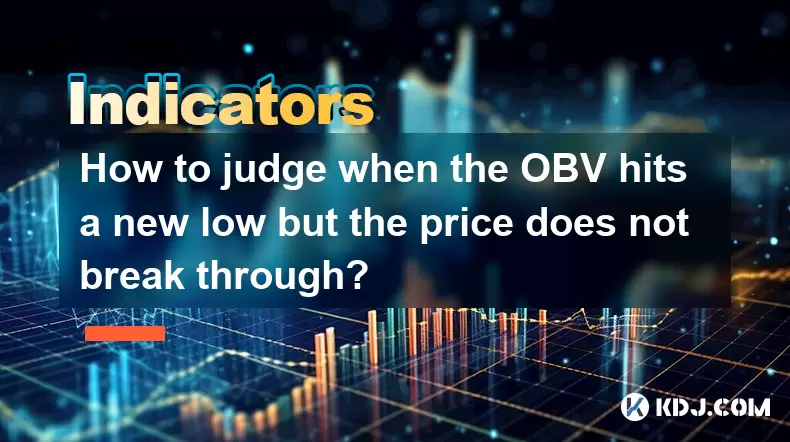
How to judge when the OBV hits a new low but the price does not break through?
Jun 24,2025 at 07:56pm
Understanding the Basics of OBV and Price ActionOn-Balance Volume (OBV) is a momentum indicator that uses volume flow to predict changes in stock or cryptocurrency prices. The core principle behind OBV is that volume often precedes price movement. When OBV hits a new low, but the price does not break through its previous support level, this can indicate...
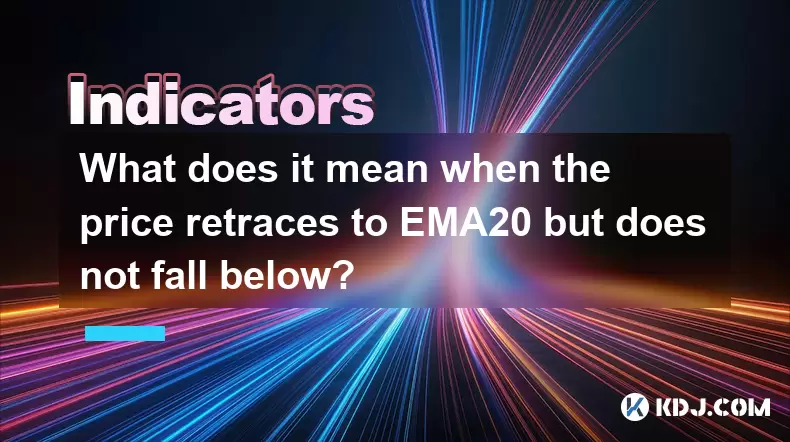
What does it mean when the price retraces to EMA20 but does not fall below?
Jun 24,2025 at 08:49pm
Understanding the EMA20 Indicator in Cryptocurrency TradingThe Exponential Moving Average (EMA) with a 20-period setting, commonly referred to as EMA20, is one of the most widely used technical indicators in cryptocurrency trading. It gives more weight to recent price data, making it more responsive to current price movements compared to simple moving a...
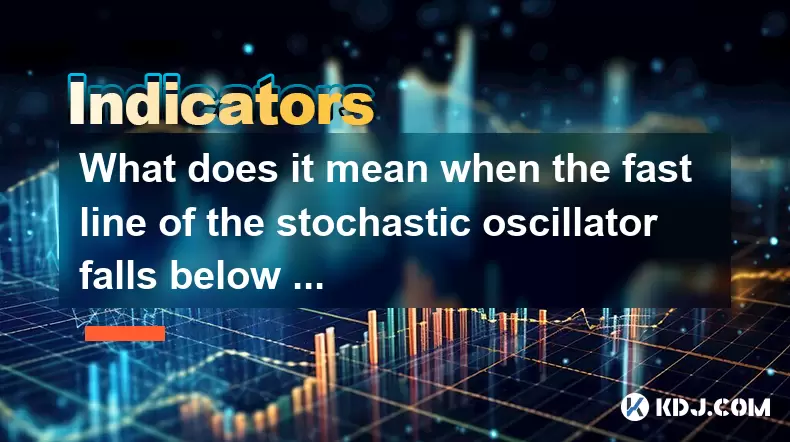
What does it mean when the fast line of the stochastic oscillator falls below the slow line?
Jun 24,2025 at 07:07pm
Understanding the Stochastic OscillatorThe stochastic oscillator is a momentum indicator used in technical analysis to assess overbought or oversold conditions in financial markets, including cryptocurrencies. It consists of two lines: the fast line (typically %K) and the slow line (typically %D). The fast line represents the current closing price relat...
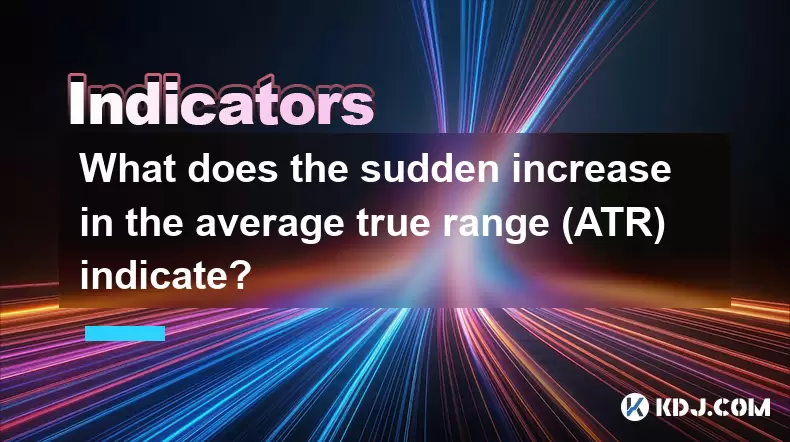
What does the sudden increase in the average true range (ATR) indicate?
Jun 24,2025 at 06:42pm
Understanding the Average True Range (ATR) in Cryptocurrency TradingThe Average True Range (ATR) is a technical indicator used by traders to measure market volatility. In the context of cryptocurrency, where prices can swing dramatically within short periods, ATR becomes an essential tool for assessing potential price movements. The ATR does not indicat...
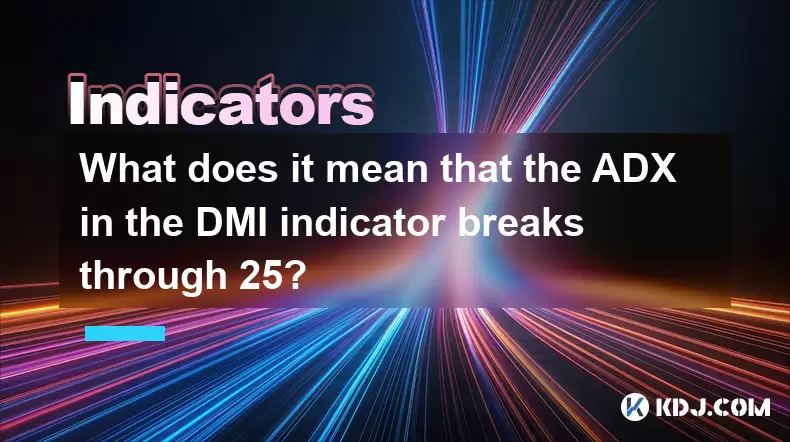
What does it mean that the ADX in the DMI indicator breaks through 25?
Jun 24,2025 at 06:21pm
Understanding the DMI Indicator and Its ComponentsThe Directional Movement Index (DMI) is a technical analysis tool used to identify the strength and direction of a trend in cryptocurrency markets. The indicator consists of two primary lines: the Positive Directional Indicator (+DI) and the Negative Directional Indicator (-DI). These lines help traders ...

What does it mean when the stochastic indicator repeatedly fluctuates at the 50 horizontal line?
Jun 24,2025 at 09:08pm
Understanding the Stochastic Indicator in Cryptocurrency TradingThe stochastic indicator is a popular momentum oscillator used by traders to identify potential trend reversals and overbought or oversold conditions. In cryptocurrency trading, where price movements can be highly volatile, understanding how this tool behaves becomes crucial for making info...

How to judge when the OBV hits a new low but the price does not break through?
Jun 24,2025 at 07:56pm
Understanding the Basics of OBV and Price ActionOn-Balance Volume (OBV) is a momentum indicator that uses volume flow to predict changes in stock or cryptocurrency prices. The core principle behind OBV is that volume often precedes price movement. When OBV hits a new low, but the price does not break through its previous support level, this can indicate...

What does it mean when the price retraces to EMA20 but does not fall below?
Jun 24,2025 at 08:49pm
Understanding the EMA20 Indicator in Cryptocurrency TradingThe Exponential Moving Average (EMA) with a 20-period setting, commonly referred to as EMA20, is one of the most widely used technical indicators in cryptocurrency trading. It gives more weight to recent price data, making it more responsive to current price movements compared to simple moving a...

What does it mean when the fast line of the stochastic oscillator falls below the slow line?
Jun 24,2025 at 07:07pm
Understanding the Stochastic OscillatorThe stochastic oscillator is a momentum indicator used in technical analysis to assess overbought or oversold conditions in financial markets, including cryptocurrencies. It consists of two lines: the fast line (typically %K) and the slow line (typically %D). The fast line represents the current closing price relat...

What does the sudden increase in the average true range (ATR) indicate?
Jun 24,2025 at 06:42pm
Understanding the Average True Range (ATR) in Cryptocurrency TradingThe Average True Range (ATR) is a technical indicator used by traders to measure market volatility. In the context of cryptocurrency, where prices can swing dramatically within short periods, ATR becomes an essential tool for assessing potential price movements. The ATR does not indicat...

What does it mean that the ADX in the DMI indicator breaks through 25?
Jun 24,2025 at 06:21pm
Understanding the DMI Indicator and Its ComponentsThe Directional Movement Index (DMI) is a technical analysis tool used to identify the strength and direction of a trend in cryptocurrency markets. The indicator consists of two primary lines: the Positive Directional Indicator (+DI) and the Negative Directional Indicator (-DI). These lines help traders ...
See all articles
























































































